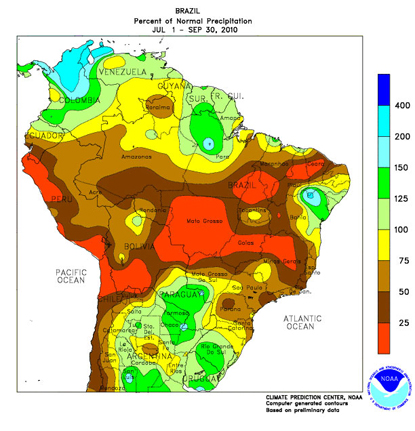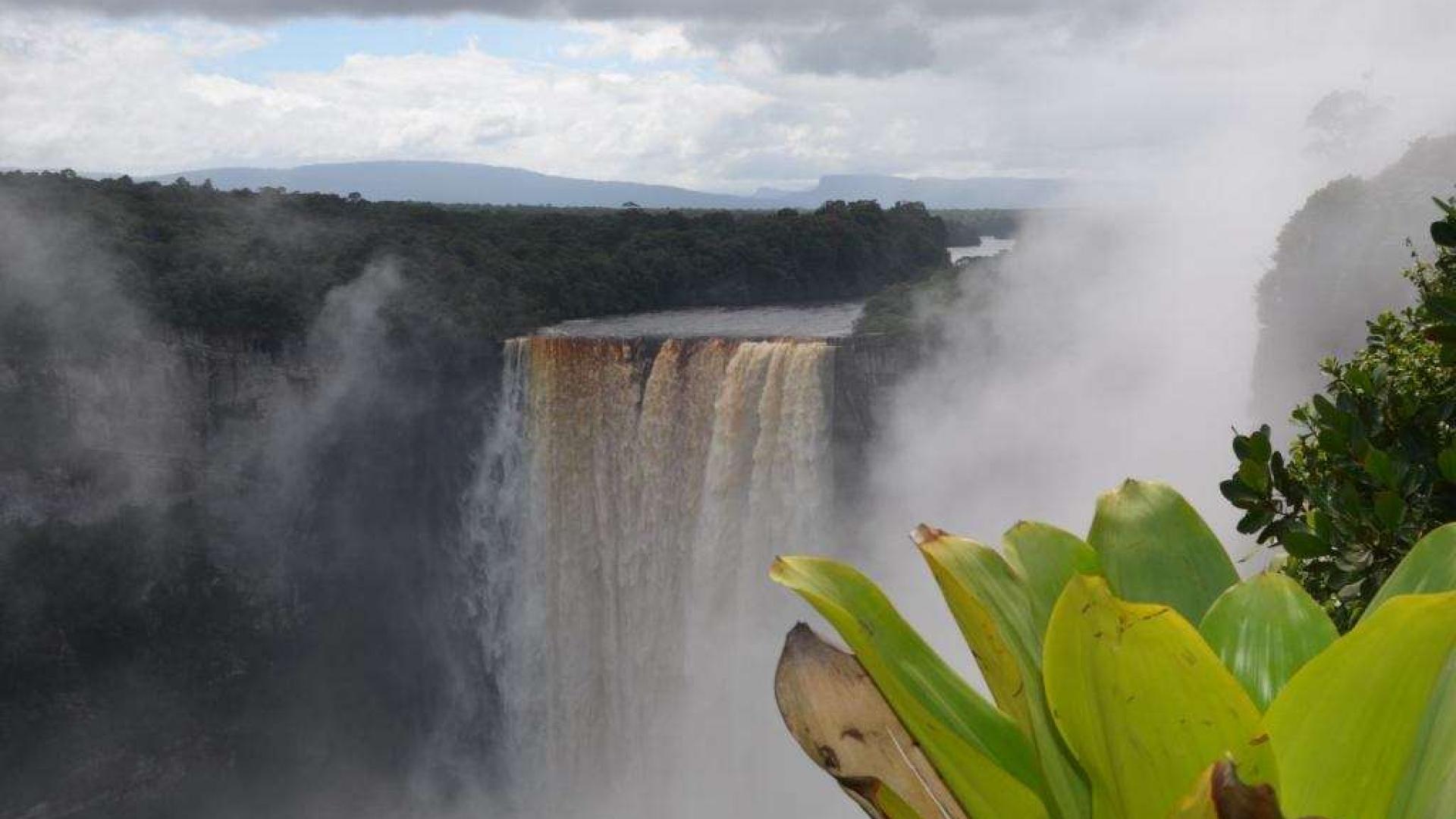The climate of South America
 The wettest continent on the planet is South America. This feature of the climate can be explained by a whole set of factors affecting the climate. In the northern part of the mainland crossed the equator, the trade winds converge to it in both hemispheres. Winds from the cortex come from the Atlantic Ocean, bringing warm air. Due to the lack of any orographic barriers moist air easily penetrates deep into the mainland, bringing moisture. In the foothills of the Andes, the maximum amount of precipitation falls each year. The annual rainfall in most parts of the continent at least 1000 mm. In different climatic zones of different rainfall patterns. During the year, they fall uniformly in the equatorial, and their maximum occurs in the summer. In the humid tropical climate there is a uniform mode of precipitation.
The wettest continent on the planet is South America. This feature of the climate can be explained by a whole set of factors affecting the climate. In the northern part of the mainland crossed the equator, the trade winds converge to it in both hemispheres. Winds from the cortex come from the Atlantic Ocean, bringing warm air. Due to the lack of any orographic barriers moist air easily penetrates deep into the mainland, bringing moisture. In the foothills of the Andes, the maximum amount of precipitation falls each year. The annual rainfall in most parts of the continent at least 1000 mm. In different climatic zones of different rainfall patterns. During the year, they fall uniformly in the equatorial, and their maximum occurs in the summer. In the humid tropical climate there is a uniform mode of precipitation.
West Coast in the southern Peruvian tropics washed over, which is cool. Cold water affects the adjacent air layer, as a result of this air is not able to climb up. Totally there are no conditions for the condensation of water vapor and cloud formation. The result is the fact that the coast for a year may receive less than 100 mm of rainfall, and most of them falls in the form of dew.
The extreme south of the mainland located in a temperate climate. The main process of circulation in these latitudes are westerly winds from the Pacific. Ocean mountains do not allow moist air to penetrate deep into the mainland. The result is that on the windward slopes of the Andes in the south of precipitation falling as much as in the equatorial zone. Of course, the climate of these places is quite complicated, so forecasters need an incredible amount of knowledge to predict the weather, but, for example, to predict the weather in Chelyabinsk, a lot easier.
- Log in to post comments





